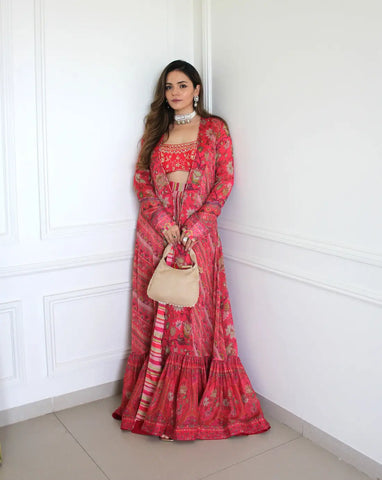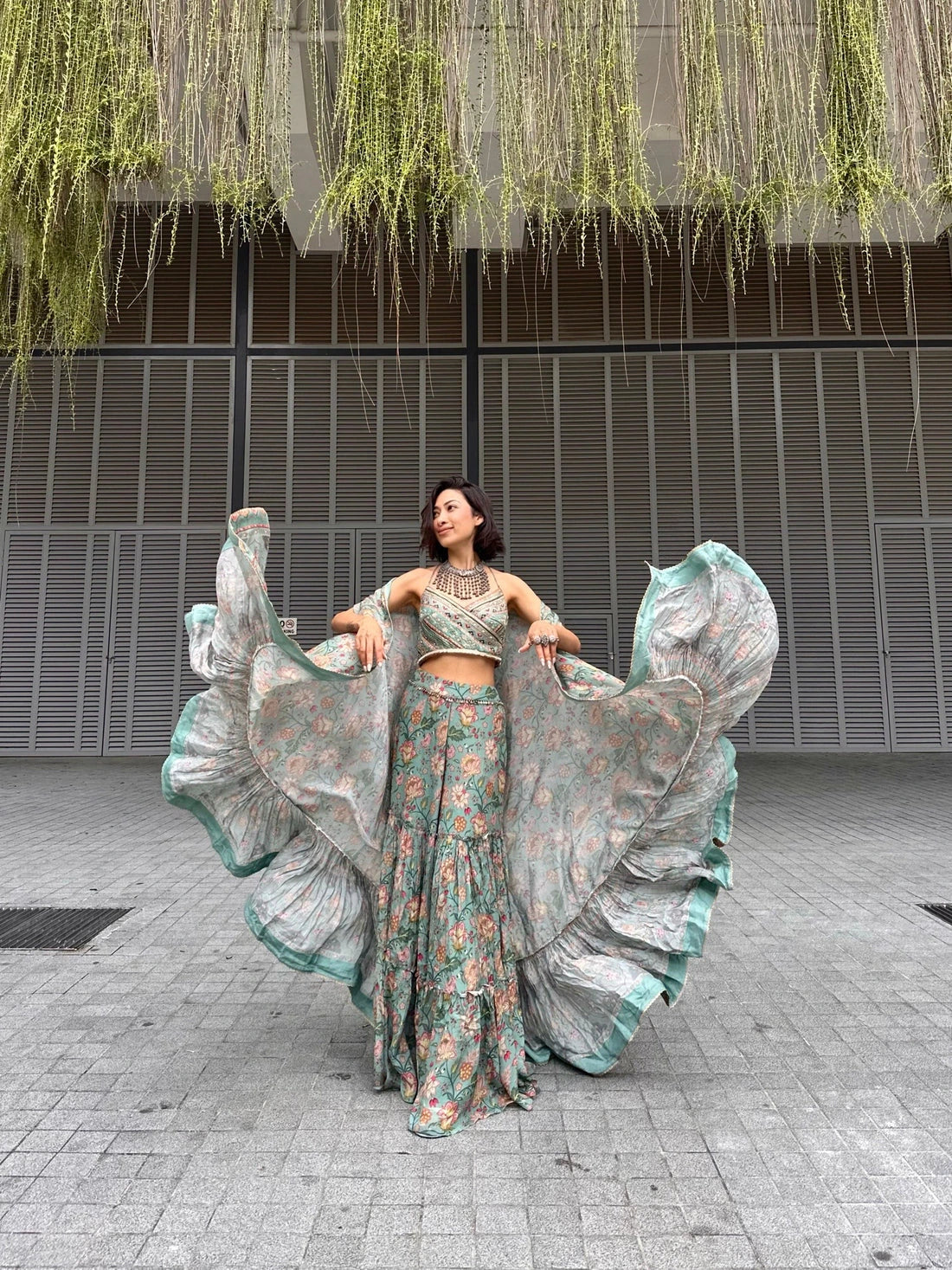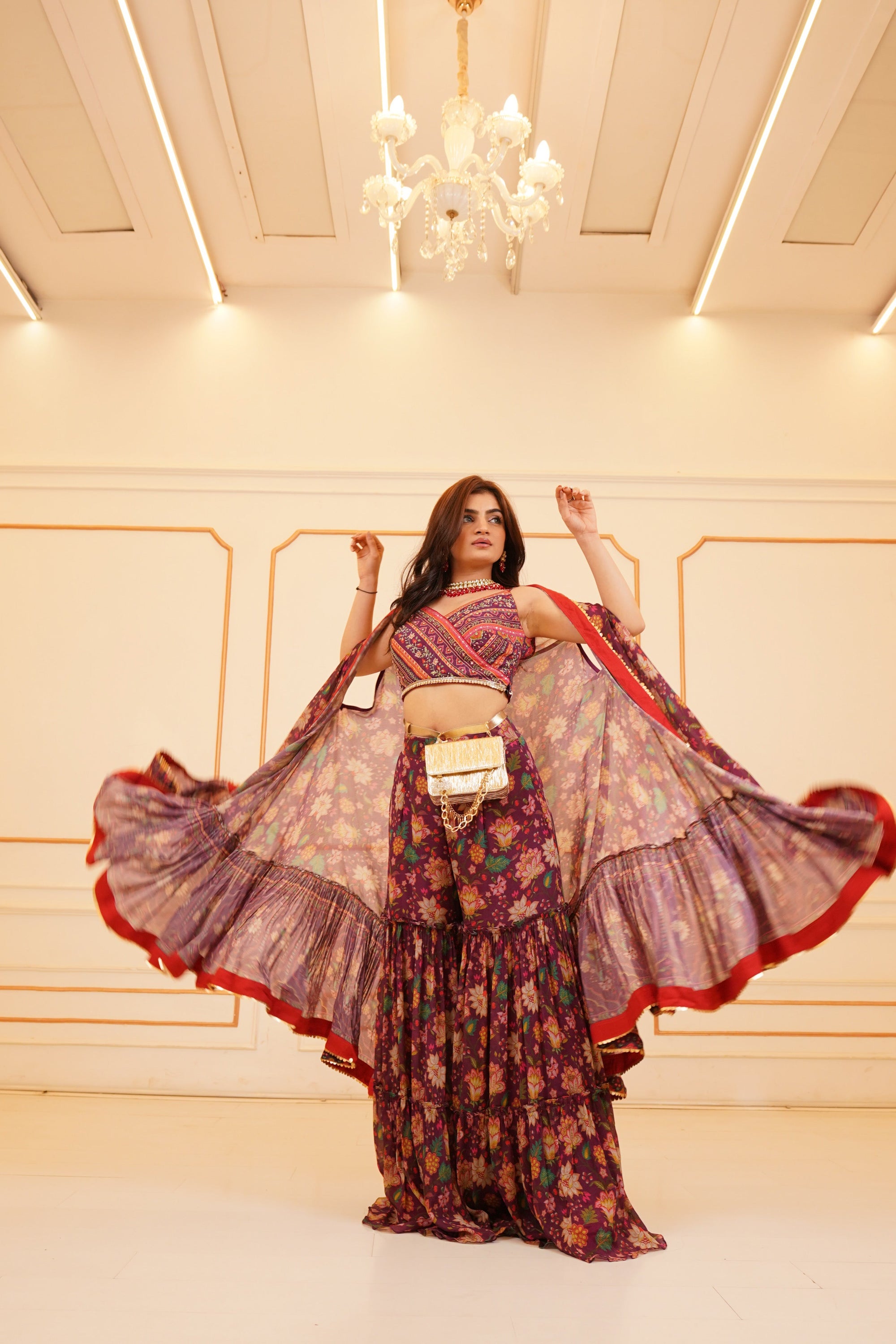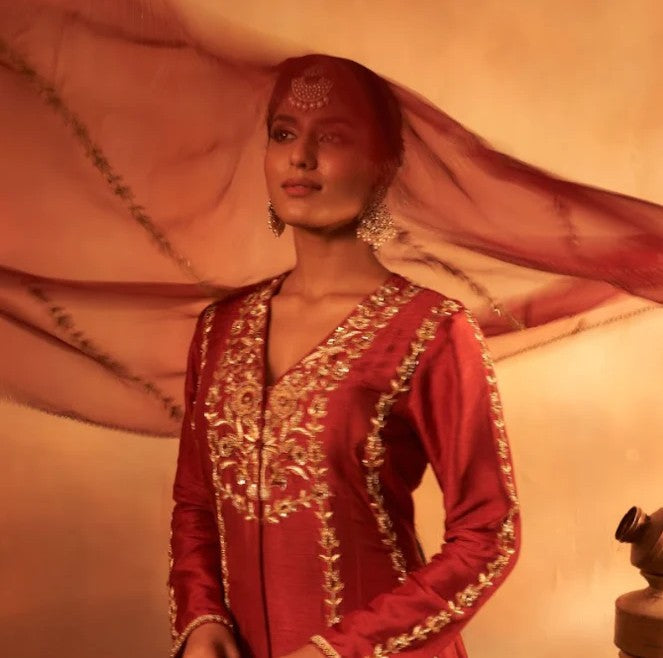Introduction
Confused about whether you should opt for a Sharara or a Gharara? Moreover, what is the difference between Sharara and Gharara? Well, let me tell you that currently, both are trendy. Celebrities such as Alia Bhatt, Kiara Advani, and Sara Ali Khan have been mentioned by Vogue India for gracefully carrying this look.
A lot of times there are certain fashion styles that can confuse people, Sharara and Gharara being one of them. Both the Sharara and Gharara radiate an elegant look and charm, however, the Gharara is more dramatic.
Let’s understand the key differences and similarities between Sharara and Gharara and their origin. Also, get to know the perfect occasions to wear Sharara and Gharara along with the best sites where you can buy them.
What is Sharara?

Sharara is a pair of flared pants that are loose around the legs with an impressive flare. Fitted at your waist, Sharara has free flow towards the end giving them a lehenga look. If it was not for the separation, it would probably be a lehenga. Sharara can be classy with minimalist designs focusing just on the massive ghera with a flowy fabric. Similarly, you can also wear them as party pants with a great flare that is heavily embellished.
What is Gharara?

A Gharara can be looked into as a glamorous cousin of the sharara as it radiates a more exceptional look. It has a perfect fit running from your waist down to your knees, then spreading out into a phenomenal flare. The fabric is ruched at the knee and a thick band, preferably a gota lace is used to hide the joint. Traditionally, a Gharara requires 12 meters of fabric, but then it can vary from 8-12 meters depending upon the desired look.
Similarities between Sharara and Gharara

Sharara and Gharara can be similar in certain ways due to which there is often confusion created. Here are some of the similarities between Sharara and Gharara:
Flared Bottoms
Both the sharara and gharara have a common similarity of having flared bottoms that give out an elegant and graceful look. At times, they might give you lehenga vibes due to the presence of flare at the hem of your outfit.
Cultural Roots
The cultural roots of sharara and gharara can be traced back to the Indian subcontinent. The popularity of these outfits can be felt all across South Asia, specifically, among Indian and Muslim women. Many of them love to wear sharara and Gharara for traditional events as well as weddings.
Difference between Sharara and Gharara

Some key differences set apart the sharara and Gharara from each other. Take a look at these differences between sharara and Gharara:
Pants Style
A sharara is a pair of loose flared pants that fits you only at the waist but flares up to the hem. Whereas, Gharara pants have a structure. They will fit you from the waist to the knee and then dramatically flare out up till the end.
Flare and Length
The flare in a sharara begins from the belt at your waist whereas a Gharara flares from the knee. A short or long kurti both suits perfectly with a sharara. However, to showcase the flare of Gharara fluently, it is always paired with a short kurti.
From Where Did Sharara And Gharara Dresses Originate?
Other than the structure of the sharara and Gharara, let me tell you they also differentiate in regards to their origin. The sharara was introduced in the Indian subcontinent by the Mughals and it has a Lebanese origin. Whereas, the Gharara was introduced by the nawabs of Awadh, giving it an Awadh origin in Uttar Pradesh.
Eventually, both the sharara and Gharara made their way into the royal wardrobe becoming a regal outfit. They were worn and adorned by the Mughal women during special occasions and weddings. They again became a vogue during the 70s, 80s, 2000s, and 2010s when Bollywood actresses wore them in popular movies.
Occasions to Wear Sharara and Gharara
Sharara and gharara are mostly worn during weddings and traditional events due to the classic and conventional look. Most of the time, you will see that the bride will be wearing a sharara or a Gharara if not a lehenga.
Other than that, you will often find sharara and Gharara worn as party wear. The Punjabi party wear category often includes sharara as a commonly adopted style. Whereas, Gharara is opted for festive wear in Pakistan and Bangladesh.
Where to Buy Sharara Online?
There are various online sites where you can easily buy sharara or Gharara of your choice. Here, at Sandhyashah, we offer you a wide range of shararas with traditional ideas and contemporary styles. Our outfits are designed with trendy and unique styles giving you an Indo-Western look. So if you are looking for a chic yet classy style, Visit Sandhyashah today!
Final thoughts
Now you will no longer get confused between sharara and Gharara as both of them have identifiable distinct features. The seamless flow of sharara is different from the Gharara which is fitting from waist to knee and then flares. Despite the differences, both of them have similar cultural roots traced back to the Mughals. They were regal outfits adored by Mughal women and to date, they have become a vogue from time to time. Visit Sandhyashah to check out more elegant styles.
FAQs
What sets Sharara and Gharara apart, and how do they reflect cultural heritage in fashion?
Sharara and Gharara both are flared pants but their structure sets them apart. sharara has a seamless flare whereas Gharara flares out from the knee. They were adorned by the Mughals in India and came into fashion again when Indian actresses showcased these outfits in popular films.
Where can one find authentic Sharara and Gharara online, and what customization options are available?
You can find sharara and Gharara online at Sandhyashah, where our manufacturers can offer you customized sizes.
When and why are Sharara and Gharara typically worn, and what occasions do they symbolize?
Sharara and Gharara are typically worn at weddings and traditional events. As they have flowing silhouettes and glamorous designs and can be heavily embellished, they symbolize celebratory occasions.



